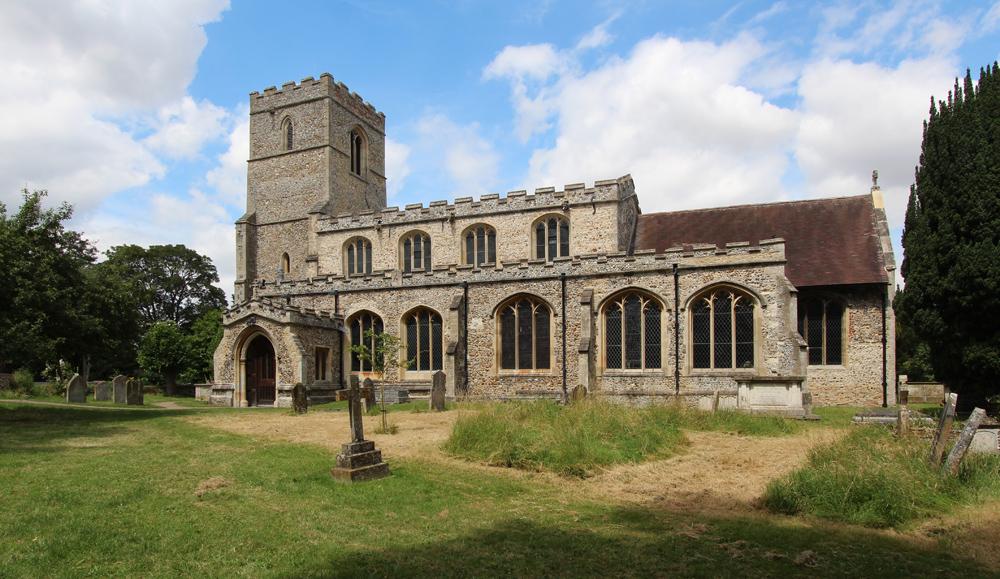It had a long, narrow nave, a small chancel with a rounded end and a high pitched roof. Some parts of this Norman work survive in the present church.
An almost new church was begun around 1308, built in the Early English and Decorated styles and made of flint, Roman tiles and ashlar. The nave was reduced in length, the south aisle was widened and the outer wall raised in height. The north wall of the old nave was demolished and a new north aisle was added to the church. The chancel arch was enlarged, giving its present lop sided appearance, and a decorated window was put in the northern outer wall overlooking the vestry.
In the 15th century our present Perpendicular church was designed. All the perpendicular features evident today date from this period including the remains of carvings like the beautiful heads of the king and queen on the south porch. The gargoyles were also added.
The Paris Chapel was built as an extension to the south aisle and linked to the chancel by two arches. The original tombs and brasses of the Parys (Paris) family (Lords of the Manor) were here, the 1425 brass on Nicholas Paris still remains.
The last major structural change came in the later 16th century when the newly important Protestant family, the Millicents of Barham, extended the northern aisle to build their family chapel. An external door provided access and the date 1587 was carved on the lintel.
Beneath the chancel arch is a large black stone monument to Sir Philip Parys who died in 1558 and was a loyal supporter of Queen Mary. He died a Roman Catholic and the inscription ‘I pray God for mercy to their soules’ was chiselled out by William Dowsing when he visited Linton in 1644 to enforce the 1643 Parliamentary Ordinance against images, inscriptions and idolatry.
Hidden behind the organ in the Millicent Chapel is an exquisite monument dedicated to Squire John Millicent’s parents and grandmother. Fresh from his triumph over the vindictive Lone family the Squire was determined to consolidate his victory by means of a beautiful monumental structure which would remind future congregations of the importance of the Millicent family in Linton affairs. The precise year of its construction is unknown, but it is most likely to have been completed after the marriage of the Squire to Dorothy Wright in 1705.
Beneath Duglas are two full sized figures with their hands meeting on a large skull: her son John and his wife Alice Chester. Hour glasses hang by their sides. John was regarded as a Civil War hero and went on to play a prominent role in Restoration politics. He was a local Justice of the Peace and became the dominant social and political figure in Linton for almost forty years until his death in 1686.
On the southern aisle wall nearest the south porch the various glass shields saved during the restoration of the church (and the only medieval glass in the church) are displayed in a window. The Queen Victoria Memorial Window is located in the north aisle. Originally intended as the Diamond Jubilee Window the window was eventually renamed to commemorate the Queen’s death, since it had taken Linton so long to raise the money!


